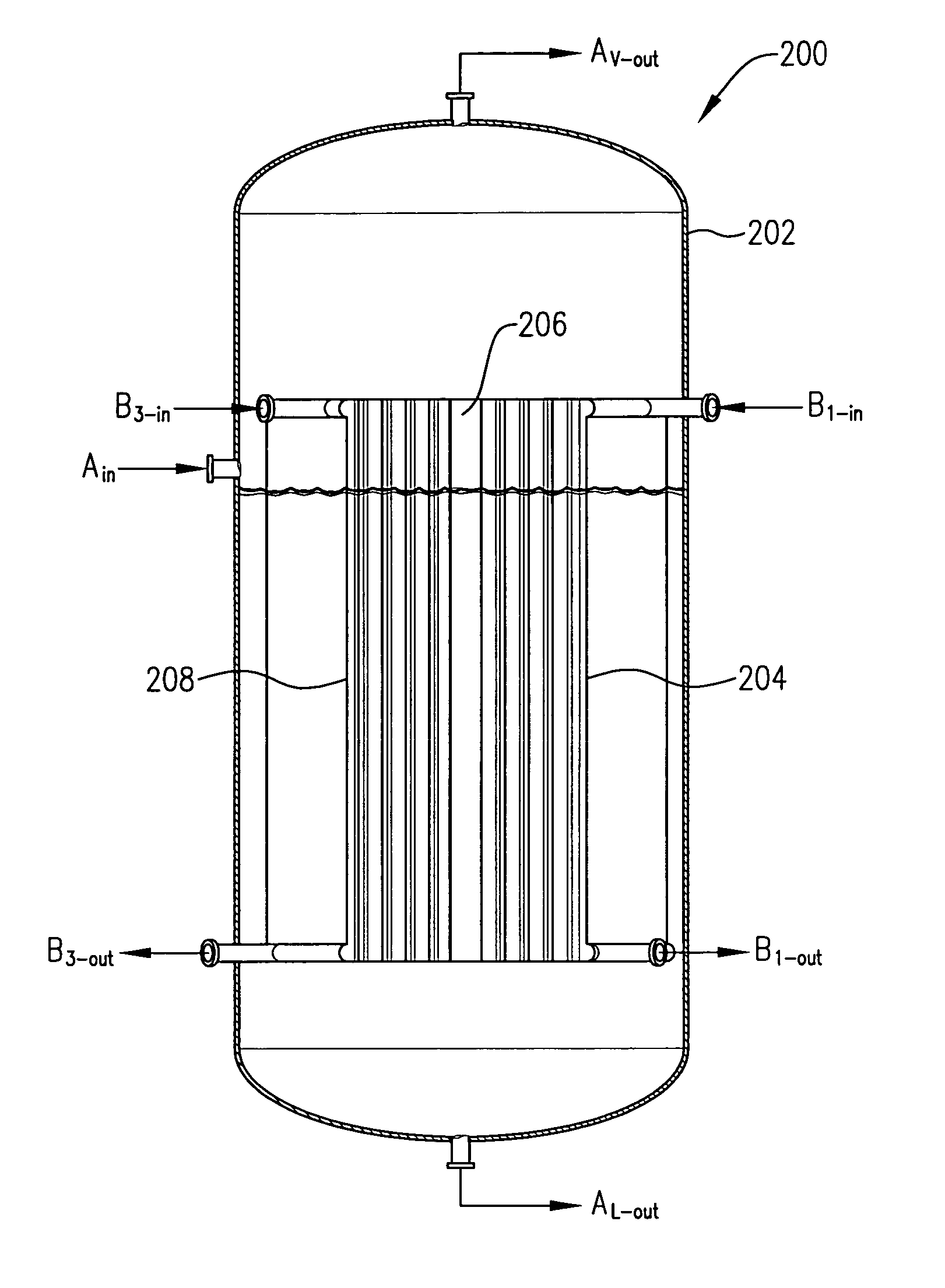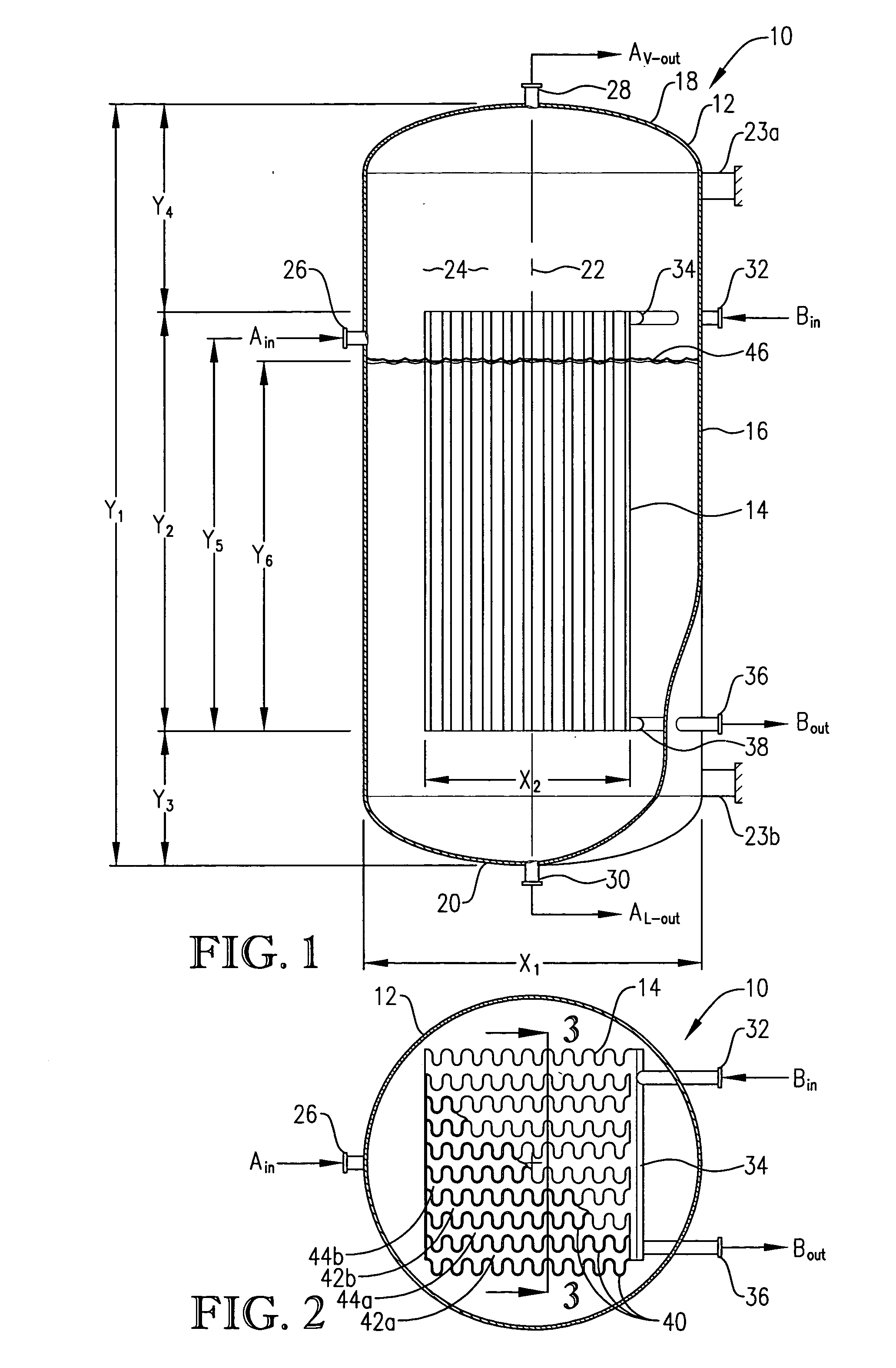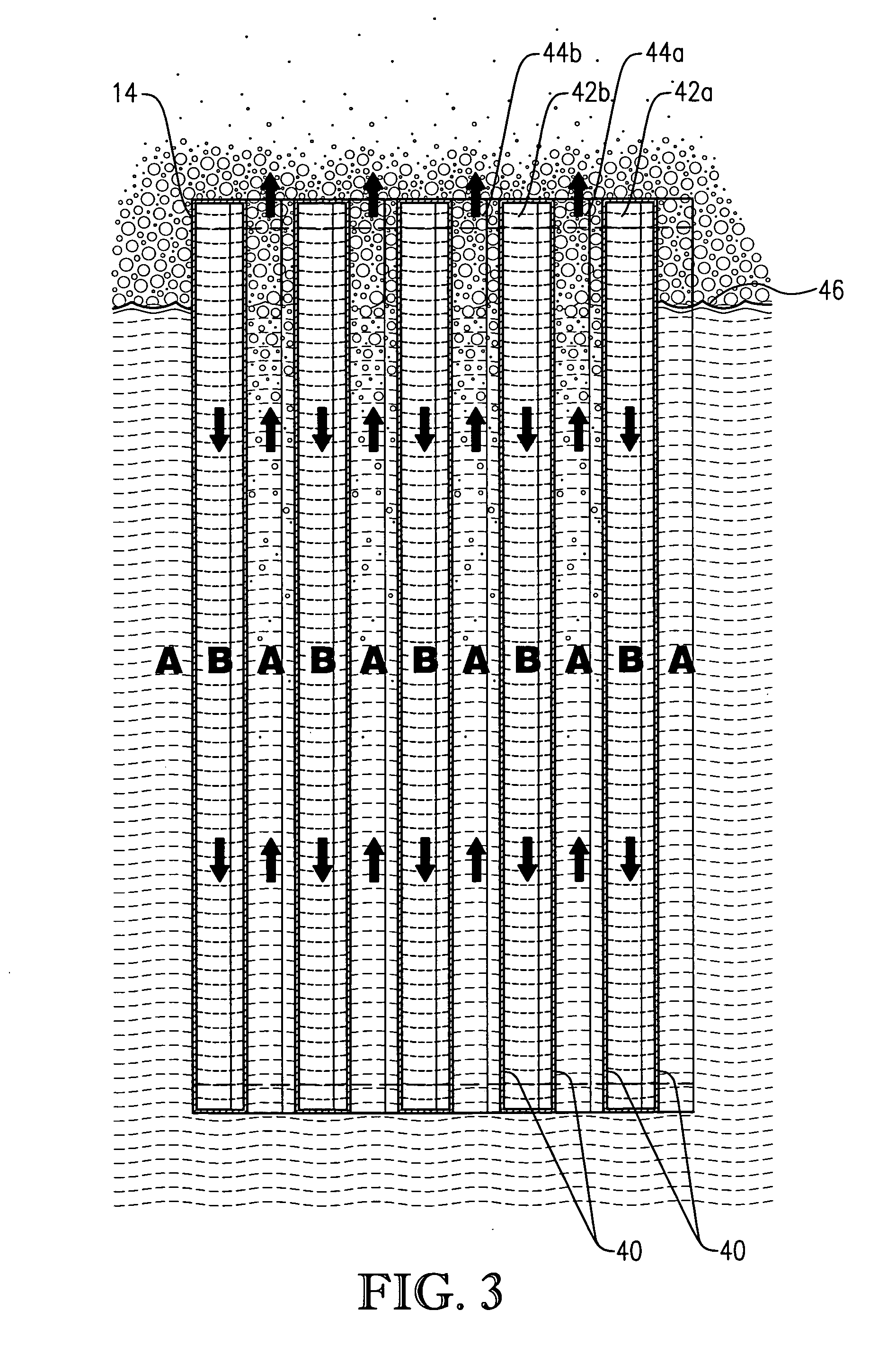Vertical heat exchanger configuration for LNG facility
a heat exchanger and vertical technology, applied in the direction of indirect heat exchangers, liquefaction, lighting and heating apparatus, etc., can solve the problems of pipeline availability or capacity exceeding the deliverability of pipelines, pipelines that are not available or are impractical,
- Summary
- Abstract
- Description
- Claims
- Application Information
AI Technical Summary
Benefits of technology
Problems solved by technology
Method used
Image
Examples
Embodiment Construction
[0036] The present invention was conceived while searching for a solution to the above-described problems stemming from the need for increasingly large cold boxes in high-capacity LNG facilities. However, at least one embodiment of the present invention may find application outside the area of natural gas liquefaction. For example, although the vertical core-in-kettle heat exchanger designs depicted in FIGS. 1-9 are well suited for use in LNG processes / facilities, these heat exchangers exhibit enhanced efficiencies which make their implementation desirable for many other applications requiring indirect heat transfer.
[0037] Referring initially to FIG. 1, an inventive vertical core-in-kettle heat exchanger 10 is illustrated as generally comprising a shell 12 and a core 14. Shell 12 includes a substantially cylindrical sidewall 16, an upper end cap 18, and a lower end cap 20. Upper and lower end caps 18,20 are coupled to generally opposite ends of sidewall 16. Sidewall 16 extends alon...
PUM
 Login to View More
Login to View More Abstract
Description
Claims
Application Information
 Login to View More
Login to View More - R&D
- Intellectual Property
- Life Sciences
- Materials
- Tech Scout
- Unparalleled Data Quality
- Higher Quality Content
- 60% Fewer Hallucinations
Browse by: Latest US Patents, China's latest patents, Technical Efficacy Thesaurus, Application Domain, Technology Topic, Popular Technical Reports.
© 2025 PatSnap. All rights reserved.Legal|Privacy policy|Modern Slavery Act Transparency Statement|Sitemap|About US| Contact US: help@patsnap.com



